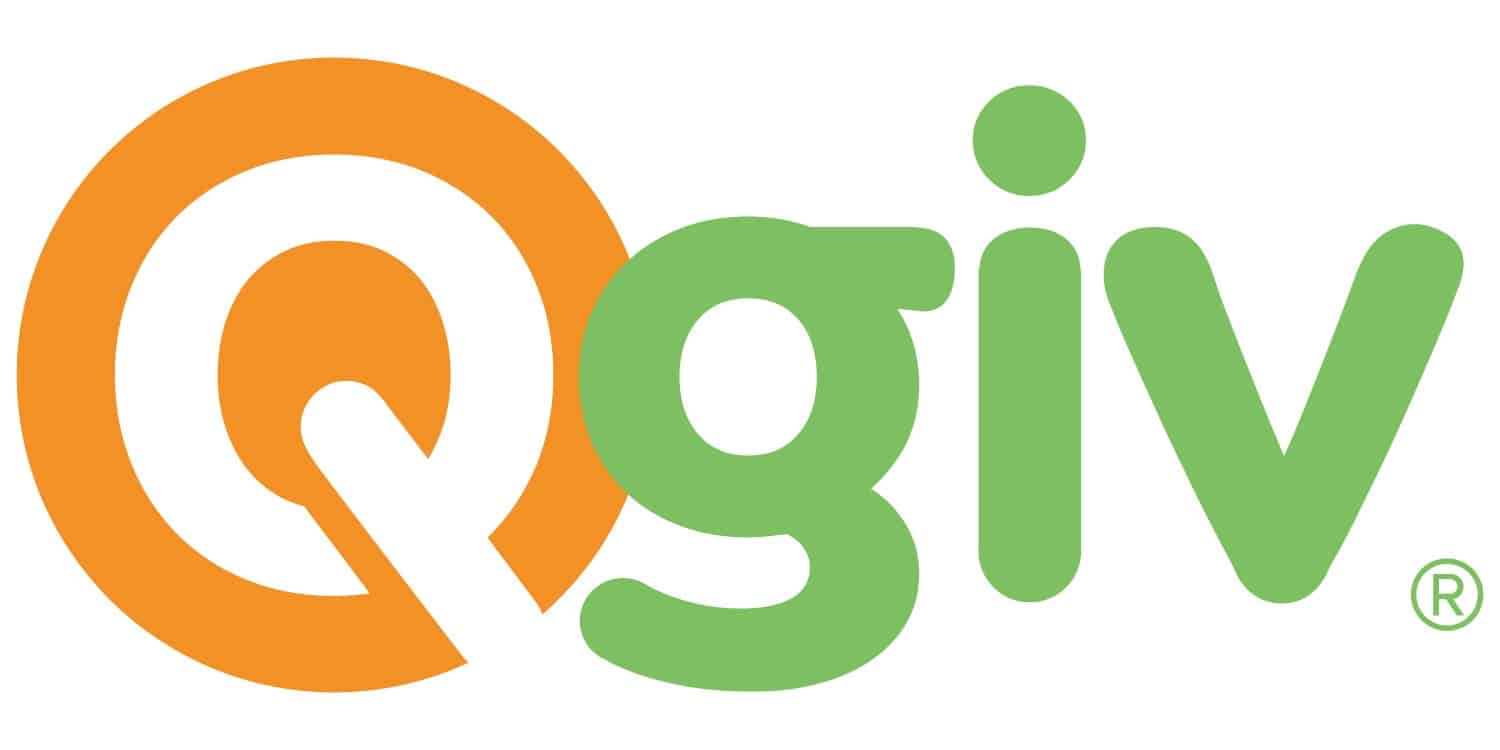What is Peer-to-Peer Fundraising? The Ultimate Guide



Peer-to-peer fundraising is a type of online fundraising campaign in which nonprofit supporters take an active role in supporting their favorite organizations. In this guide, we’re going to cover the ins and outs of peer-to-peer fundraising through the following sections:
To start, we’ll revisit the basics to make sure we’re all on the same page when it comes to peer-to-peer fundraising.
Peer-to-peer fundraising (sometimes shortened to P2P fundraising) is a fundraising strategy where individuals organize personal campaigns to raise money on behalf of a nonprofit organization.
Organizations recruit volunteers among their supporter bases to launch personalized campaign pages. Volunteers then reach out to their network of friends and family to collect donations for their campaigns.
While peer-to-peer fundraising and crowdfunding share some characteristics, they are two separate strategies.
Both crowdfunding and peer-to-peer fundraising require your nonprofit to rely on its network of supporters reaching out to their friends and family (usually leveraging social media) in order to raise money on behalf of your nonprofit.
The difference lies in how your campaign is set up and the way you share it. While crowdfunding campaigns empower your supporters to share the same campaign page across multiple sites and platforms, peer-to-peer fundraising empowers your volunteers to launch their own personalized pages to raise funds on your behalf.
This means that your peer-to-peer fundraisers can create a campaign page that includes personal information about their connections to your organization. Personal connections like this further encourage new supporters to give to the campaign due to their relationship with your volunteer fundraisers. In fact, 39% of Americans say they’ve donated to a cause because of a request from a family member or friend.
There are two primary types of peer-to-peer fundraising campaigns: rolling and time-based.

Rolling peer-to-peer fundraising campaigns operate without a time limit. They’re designed to raise a certain amount of money and those funds don’t have to be raised by a set deadline. These campaigns may be tied to an event, but are frequently independent.
An example of a rolling campaign is a continuously running peer-to-peer fundraising campaign dedicated to raising money for recurring expenses. For example, if you want supporters to have the option to raise money on behalf of your nonprofit at any time, you might set up a rolling campaign on your site that allows them to create a personalized campaign whenever they want and dedicate the revenue to your annual fund.
Time-based peer-to-peer fundraising campaigns are more common and require that the funds be raised by a specific deadline. These campaigns are popular because they create a sense of urgency for your supporters to reach their personal goals and to help your nonprofit reach its overarching goal.
These types of peer-to-peer fundraising campaigns are often tied to events. For example, an organization may launch a peer-to-peer fundraising campaign leading up to its annual walk-a-thon. This spreads the word about the event, increasing revenue for the general campaign through peer-to-peer fundraising.
Hosting a peer-to-peer fundraising campaign allows you to cast a wide net and earn donations from many different people at once. It’s not just about accessing funding, though. Peer-to-peer fundraising campaigns also offer opportunities for nonprofit organizations to connect more deeply with their supporters.
These campaigns can allow you to:
Before you launch your peer-to-peer campaign, choose which goals are most important for your organization, both in terms of revenue and engagement opportunities. That way, you can make decisions that will best target those specific goals and outcomes from the campaign.
For example, you may decide to use your peer-to-peer fundraising campaign as a way to engage your current support base and increase your retention rate. In this case, you might set goals regarding the percentage of your current supporters you want to recruit to participate in the campaign. Then, you can specifically focus on encouraging supporters to participate, stewarding them, and showing your appreciation as they raise funds for your mission.
Here’s how to launch your peer-to-peer fundraising campaign.
Chances are, you’ll have more than one goal that you’d like to accomplish. Determine all of your goals, then rank them in order of priority.
For example, you might decide that you have four goals for your campaign:
From here, you need a revenue goal that will meet your needs. Let’s say that you want to raise $20,000. If you recruit 50 volunteers, you can encourage them to set a goal of raising $400 each for your campaign. If they’re successful, you’ll hit that $20,000 goal.
Pick the software platform that will best help your nonprofit reach its peer-to-peer campaign fundraising goals. Look for a solution with customizability, gamification tools, and other features that will help you create the best possible campaign. We’ll dive deeper into some of the top options available later on.
If you already have a peer-to-peer platform on hand, start adding your campaign’s details to your main information page. Highlight the basics of your campaign, including your overarching goals and what the funds raised will support.
Start recruiting supporters to fundraise on your behalf by presenting the campaign’s objectives and goals. Position the opportunity as a way to get more involved with your nonprofit and become an ambassador for your cause.
After you’ve recruited your supporters, provide them with training about how to launch their own campaign pages and make the most of the opportunity. Focus on helping them create their own fundraising appeal. People tend to give money to a person rather than an organization, meaning their unique words and appeals will drive more support than a more generic message from your organization.
Support your volunteer fundraisers during every step of your peer-to-peer fundraising campaign. Provide training before the campaign starts to show them the best ways they can set up their own campaign pages. Then, take additional steps throughout the campaign to show them how to take their fundraiser to the next level.
For instance, you might recommend:
Regularly check in with your supporters to see how they’re progressing toward their individual goals. This will keep their motivation high as they continue to raise funds for your organization.
When you hit your goal, celebrate! Reach out to all of the supporters who helped fundraise on your behalf and thank them for their involvement.
On a smaller scale, when individual fundraisers hit their goals, reach out to congratulate them. Encourage them to continue raising money for the campaign in this same message so that they know they can keep going and surpass their goal.
After the campaign ends, it’s time to say a lot of thank yous. Thank every fundraiser for getting involved, and don’t forget to show appreciation for the donors who contributed to the campaign’s success.
Avoid lumping your donor and volunteer segments together. Instead, create personalized communications depending on how each individual participated in your campaign to reach everyone on a personal level.
To show your appreciation for your fundraisers, consider the following:
To show your appreciation for your donors, you might consider the following:
These appreciation strategies will close out the campaign and make sure it ends on a high note for everyone involved. They will also encourage people to get more involved in the future, increasing your organization’s retention rate for these types of campaigns.
Directly after the campaign, build a report of the key metrics that determine your campaign’s success.
Some of the metrics you might decide to analyze include your:
Analyze these metrics and identify opportunities for improvement. Then, make a note of these opportunities for the next campaign. We recommend conducting this analysis directly after the campaign so that the details are still fresh in your mind.
Marketing is a necessary part of any fundraising campaign, and it plays a significant role in your peer-to-peer campaign as you need to market to multiple audiences at once.
First, you’ll need to market your campaign to recruit volunteers to fundraise on your behalf. Then, you’ll need to continue marketing to help reach your campaign goal.
Target specific segments in your CRM. These segments will help you engage the appropriate audience with tailored messages designed to earn their support. You can even break these segments down further depending on the size of your campaign.
Prioritize getting in touch with past volunteers for these types of campaigns in the past, those who have shown significant interest in your organization, and those who have previously supported campaigns funding similar programs. These supporters will be more likely to get involved and create their own campaign pages.
After you’ve recruited your volunteers, reach out to all of your engaged donors, letting them know about your campaign. Again, leverage segments to reach these supporters with the right message. You may direct them to the campaign’s main giving page or refer them to supporters on whose campaign pages they can donate.
You can use several platforms to reach supporters, no matter how they may engage with your peer-to-peer fundraising campaign. For instance, you can use:
On each of these platforms, use storytelling strategies to capture the reader’s attention and encourage them to get involved. The hero of your story, for instance, could be the constituent that you’re working with to build a home. Then, you can explain how their success is vital to your organization’s mission.
In your peer-to-peer campaign, explain and teach the basics of storytelling to your fundraisers. They can then leverage these principles on social media and other marketing platforms to gain their network’s attention. A few storytelling basics to cover include structuring your story with a clear beginning, middle, and end and describing their emotional connections to your cause to personalize their stories.
Peer-to-peer fundraising campaigns can take many forms. Consider your development plan and the type of campaign that will best fit your needs.
Check out this comprehensive list of P2P fundraising ideas for even more ideas!

A 5K is a great way to inspire friendly competition among supporters while raising funds for your mission. Use your peer-to-peer fundraising campaign to spread the word about the event and encourage participants to launch their own personal campaign pages ahead of time. That way, even those who can’t attend are able to donate and support your cause.

Similar to your 5K race, you can encourage your walk-a-thon participants to raise funds for your cause before and during the event. Encourage supporters to set up peer-to-peer pages and ask for pledges based on the distance they walk (i.e. $5 per number of laps or miles).

Sports tournaments are exciting opportunities that encourage people to come out and support their local teams. Ask each team to set up their own fundraising page as a part of your peer-to-peer campaign so supporters can cheer on their favorite team and show support by contributing to the campaign. The team that wins the tournament and the one that raises the most money for your nonprofit should receive a reward.

Raising money for a single sports team is another great way to leverage a peer-to-peer fundraiser. Let’s say your nonprofit organizes a pick-up kickball game to raise money. Each team member can raise funds using their own personalized campaign page leading up to the big game. Make sure the winner gets a prize!

Read-a-thons are perfect peer-to-peer fundraising opportunities for kids. Encourage them (with the help of their parents or guardians) to set up a campaign page and ask for sponsorships for the number of pages they read in a set period of time.

Your nonprofit’s holiday party is an exciting time for your organization. Invite supporters to attend and raise money leading up to the event. You might even offer a discount for entry (if you require an entry fee) for supporters who raise a certain amount of funds.

Merchandise campaigns are special types of peer-to-peer campaigns where you sell merchandise to raise donations. Your supporters create their own campaign page connected to your organization. Then, when the supporters’ friends and family make a donation of a certain size, they’ll receive a t-shirt, mug, or other branded merchandise.
To host an effective peer-to-peer fundraising campaign, you’ll need a platform that allows your supporters to customize their campaign pages and promote them to a wide audience. We recommend the following platforms.

Bloomerang + Kindful is our favorite peer-to-peer fundraising platform on the market. With Kindful’s comprehensive peer-to-peer fundraising platform, you can empower team leaders to customize their pages and encourage their network of friends and family to contribute.
Keep in mind that you can’t access the Kindful fundraising tools on their own — they’re bundled with the Kindful and Bloomerang CRMs. This means that you get the bonus of some of the most robust donor management tools available when you invest in the Kindful or Bloomerang platforms.
You can encourage your fundraisers to customize their fundraising pages with goals, images, and a message that resonates with their social media followers. For instance, you can tell your fundraisers to share their connection to your cause on their fundraising page. This strategy is effective because, as we mentioned above, peer-to-peer donors tend to give to the person rather than the organization.
With the Bloomerang + Kindful tool, you gain access to a fundraising and donor management platform. This robust solution allows your nonprofit to collect and track key metrics about the campaign, save engagement details directly to individual donor profiles, and help you follow up with each donor after the campaign.

Bonfire is a t-shirt fundraising platform that offers peer-to-peer functionality as a part of its merchandise fundraising tools. Your nonprofit can design a t-shirt, sweatshirt, mug, or other merchandise items for your online campaign.
When someone contributes a certain amount of funding for your campaign, they’ll receive a merchandise item in return for their gift. This adds an additional incentive to give and allows supporters to promote your organization’s name and logo.

Donately is an online giving tool that offers several donation options for nonprofit campaigns, including peer-to-peer fundraising. The peer-to-peer fundraising pages offered by Donately are simplistic in design, which makes it easy for supporters to share their individual campaign pages with their network of family and friends.
The platform also comes with a self-service donor dashboard so that supporters can monitor their campaigns and make sure they’re on track to reach their goals.

If you’ve been working in the nonprofit sector for a while, you’ve likely heard of Classy. This platform is one of the most well-known in the industry for peer-to-peer fundraising. Classy offers an easy-to-use platform that helps fundraisers get up and running quickly with their own donation pages.
Classy allows your organization to send automated emails, reminding supporters to reach out to their network of friends and family regularly for donations or to provide training materials to boost the campaign further.

OneCause is a fundraising platform that specializes in nonprofit auctions but also offers the tools necessary for a number of different fundraising campaigns. Leading up to your auction, you can take advantage of their peer-to-peer functionality to maximize revenue.
As part of the peer-to-peer fundraising essentials plan, nonprofits can access fitness tracking for active events like walk-a-thons, text donation alerts and replies, customizable leaderboards, and more.
If you frequently host auctions alongside peer-to-peer fundraising opportunities, OneCause might be the platform for you! 
Qgiv also offers a number of fundraising tools that your organization can use in various campaigns, including for your peer-to-peer fundraising campaign. Their campaign pages are also easy to use and customizable to encourage more donations.
They offer gamification tools like leaderboards and fundraising thermometers. This provides further incentives for donors to give and motivation for your fundraisers to continue reaching out to their networks. 
SalsaLabs offers peer-to-peer fundraising as a part of their suite of fundraising tools, SalsaEngage. In addition to peer-to-peer fundraising, this platform offers digital marketing tools, advocacy software, and online fundraising pages. This means you can combine these tools to maximize your campaign’s fundraising potential.
If your organization is looking for a comprehensive fundraising platform to meet several of your fundraising goals, SalsaLabs is an option to consider.
Peer-to-peer fundraising can be challenging, especially if you’re new to it. That’s why we’ve compiled several tips that you can use to maximize your campaign and help you succeed.
Here are our top tips for success:
Using the right online giving tool is essential for ensuring you can enact these various peer-to-peer fundraising tips. Prioritize the features that you want as a part of your peer-to-peer campaign, then be sure the software you ultimately use has those features included.
Peer-to-peer fundraising is a useful fundraising strategy that your organization can use to raise funds, increase your donor retention rate, and generate excitement leading up to fundraising events. Not only that, but as a virtual campaign opportunity, it’s also the perfect fundraising opportunity to engage supporters who can’t attend events in person.
If you’re looking for even more information about fundraising and how peer-to-peer fundraising will fit into your overall strategy, check out these additional resources:
Comments